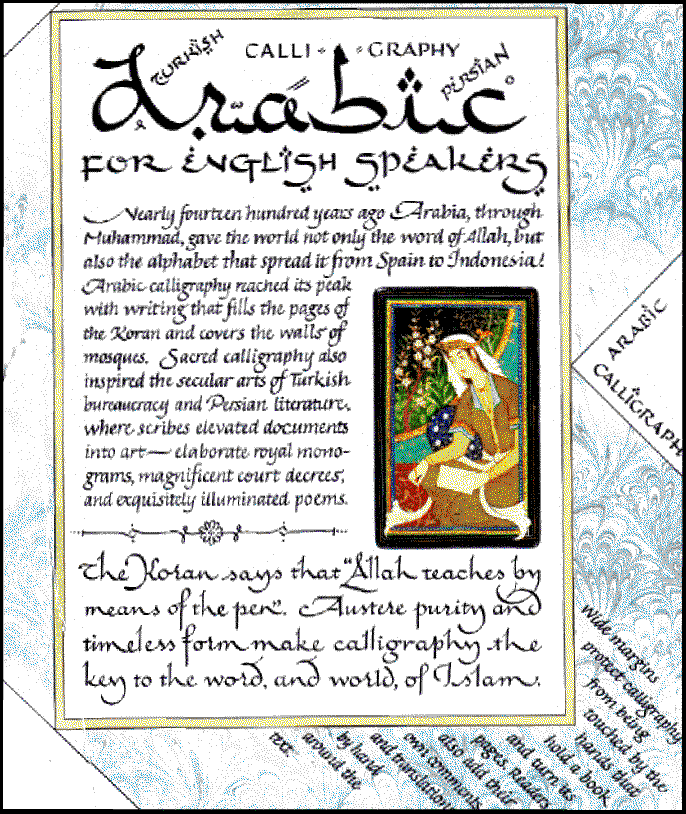
Learn World Calligraphy
Discover African, Arabic, Chinese, Ethiopic, Greek,
Hebrew, Indian, Japanese, Korean, Mongolian,
Russian, Thai, Tibetan Calligraphy, and Beyond
Margaret Shepherd
(Watson Guptill)

Ms. Shepherd names twenty different calligraphies, but we think it is all a matter of enculturation. For someone of China, or Egypt, or Mongolia, letters called "Roman" --- "d," or "m," "x," or "w" --- might also be called "calligraphy" ... certainly appearing as weird as the forty-seven characters in Devanagari, or the twenty-four letters of Viking Futhark, or what looks like the 120 or so to be found in Ethiopic.But you come to realize, after a brief visit to Calligraphy, that Shepherd is not here to teach you any of these languages, certainly not how to read or write the sinographs of the oldest language in the world, Chinese. (That would require us to learn some 3,000 - 4,000 characters.)
Instead, what the author is eager for us to do is far more beguiling: she wants us to see high art in the script of Japan or Morocco or Armenia. She'll even teach us how to hold the pen, how to shape the letter, how to use the calligraphy brush.
"The brush stays upright," she explains: "Your wrist can flex less when you sit, stand, or kneel higher than your writing surface to write larger letters. Whatever your position, your forearm should not rest on the paper."
Each page here is a riot of color, of lettering, of exquisite design, a rich mix of Roman with that of, say, Mongolian. She first defines the character of it:
Mongolian, unlike any other alphabetic script in the world, is written and read vertically. Its eighteen consonants and five vowel signs join each other to spell out sounds; as in Arabic script, they take different shapes at the beginning, middle or end of a word.
She then shows how we can write Roman with a Mongolian cast to create an appropriate mot: "The Path to Buddhahood follows these five steps." Then, in vertical lines, "vows," "meditation," "knowledge," "self-awareness," "release."
All along, we are given a painless lesson in etymology. For instance, the Cyrillic alphabet was designed by St. Cyril, on mission to Bulgaria, which then drifted north, as "the letters made their way to Russia."
There is a brief listing (so not as to scare us) of the thirty-three characters, and, for easy integration, she divides them into three groups: those just like Roman, those which are "vaguely familiar," and the remaining ones, those that are "unique."
There are constant surprises here: the founding fathers of America "considered making classical Greek the official written language of the new nation." India uses a dozen scripts just "to print its money." Paper may have evolved in Korea in the 6th Century, B. C. And the central visual principle of Greece is "the Golden Ratio:" 1 to 1.618.
She also thinks that we might consider Braille and Morse Code ("dots to be read with your ears") as forms of Calligraphy.
--- Mary Farber, MA